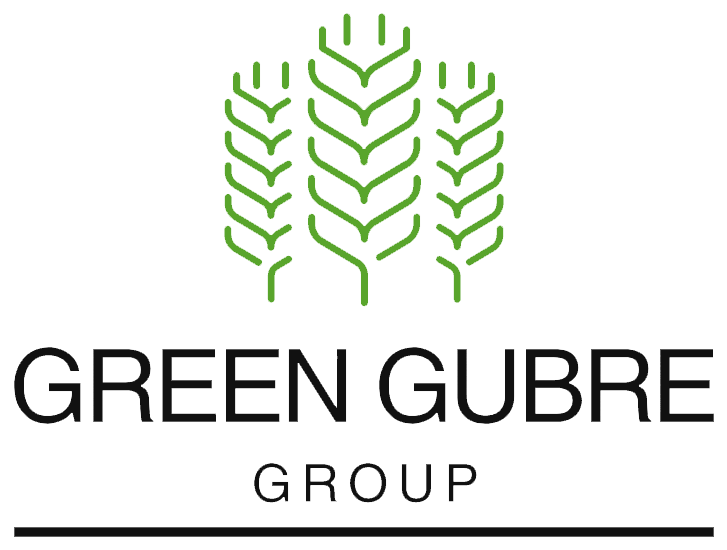How Digital Technologies Are Optimizing Fertilizer Supply Chains in 2025
How Digital Technologies Are Optimizing Fertilizer Supply Chains in 2025

The global fertilizer industry is evolving at a rapid pace. In 2025, the intersection of digital transformation and agricultural supply chains is reshaping how fertilizers are sourced, transported, priced, and delivered. From AI-driven demand forecasting to blockchain-based traceability, digital technologies enhance supply chain efficiency, transparency, and resilience—especially in an era marked by climate risks, geopolitical shifts, and rising global food demand.
This blog explores how digital innovation unlocks new efficiencies across the fertilizer value chain—from manufacturer to farmer—and why investing in these technologies has become mission-critical for global suppliers and traders.
The Need for Digitalization in Fertilizer Logistics
Fertilizer supply chains are complex, multinational, and time-sensitive. From raw material procurement and production to shipping, warehousing, and last-mile distribution, delays or inefficiencies at any stage can cause:
- Disruptions in agricultural cycles
- Lost revenue due to spoilage or demurrage
- Inaccurate demand forecasts leading to oversupply or shortages
- Increased environmental impact
Traditional, paper-heavy systems struggle to keep up with the global fertilizer trade's current scale and pace. The urgency for digital transformation is not just a trend; it's a necessity for survival in the industry.
Key Digital Technologies Shaping Fertilizer Supply Chains in 2025
1.AI & Predictive Analytics for Demand Forecasting
Advanced algorithms analyze weather patterns, crop cycles, satellite data, and trade flows to:
- Predict fertilizer demand by region and season.
- Optimize inventory levels and reduce warehousing costs.
- Prevent overstocking or under-delivery in key agricultural markets.
🔍 Example: AI models now help forecast urea demand in West Africa based on seasonal rainfall projections, ensuring just-in-time deliveries to Ghana and Nigeria.
2. Blockchain for End-to-End Traceability
Blockchain offers secure, immutable tracking of fertilizer shipments from origin to destination. This enables:
- Authentication of origin is critical for markets under CBAM scrutiny.
- Verification of production methods (e.g., green ammonia vs fossil-based).
- Real-time compliance audits and digital customs clearance.
📦 Result: Buyers can verify that the fertilizer they receive complies with sustainability standards, origin declarations, and trade regulations.
3. IoT Sensors & Smart Containers
The Internet of Things (IoT) has introduced sensors in containers and warehouses that:
- Monitor temperature, humidity, and shock exposure during transit.
- Send alerts to prevent spoilage or contamination.
- Provide real-time GPS tracking of fertilizer shipments.
📡 Benefit: Reduced risk of NPK or ammonium sulfate damage due to environmental fluctuations during shipping.
4. Digital Freight Management & Smart Contracting
Digital freight platforms automate:
- Vessel booking and port scheduling
- Freight rate comparison and optimization
- Customs documentation and real-time trade compliance
📜 Smart contracts automatically trigger payments (via MT103 or LC) upon delivery milestones, minimizing disputes and delays.
5. Geospatial Mapping & Drones
Geospatial data, drone imagery, and satellite tech now support:
- Targeted fertilizer application recommendations.
- Monitoring of soil nutrient profiles.
- Better integration of supply planning with farm-level needs.
🌍 Impact: Fertilizer companies can offer tailored products and delivery windows, improving farmer satisfaction and sustainability outcomes.
6. Cloud-Based Platforms for Supplier-Buyer Integration
Modern B2B cloud systems connect fertilizer suppliers, traders, shipping lines, and end-buyers in one digital ecosystem:
- Centralized order tracking
- SSecuredocument exchange (PI, SCO, BL, CoA)
- Real-time delivery status and delay mitigation
📈 Result: Streamlined collaboration, fewer manual errors, and faster response to supply chain disruptions.
Strategic Benefits of Digital Supply Chains
- Cost Reduction: Automated systems reduce manual processing, eliminate delays, and prevent demurrage or spoilage penalties.
- Resilience & Agility: Real-time alerts help businesses instantly adapt to logistics challenges (e.g., port closures, fuel price shocks, and weather delays).
- Sustainability Compliance: Digital traceability supports CBAM, ESG reporting, and carbon footprint reduction through intelligent routing and green sourcing.
- Competitive Advantage: Firms using digital tech provide faster service, better prices, and more transparency—becoming preferred partners for importers and governments.
Green Gubre Group’s Digital Supply Chain Approach
At Green Gubre Group, we are embracing digitalization to serve our clients across Africa, the Middle East, and Asia with:
- Live shipment tracking
- Digital document portals for faster customs and bank processing
- Innovative sourcing models based on Argus price indices and AI demand forecasts
- Transparency in carbon compliance for CBAM-sensitive regions
Our partnerships with shipping lines, port operators, and tech providers ensure smooth, optimized fertilizer deliveries—urea to Tema, NPK to Abidjan, or Ammonia SA to Karachi.
Conclusion
Digital technologies are reshaping the fertilizer industry in 2025, turning traditional, fragmented supply chains into agile, transparent, and resilient ecosystems. From AI-driven forecasting to blockchain-backed traceability, the digital shift empowers suppliers to serve farmers better, cut operational costs, and meet regulatory demands.
At Green Gubre Group, we are committed to digital transformation as the fertilizer industry’s most powerful growth driver. We believe in helping our partners and clients fully embrace this transformation, one innovative shipment at a time.
References
- FAO – Digital Agriculture: Transforming Fertilizer Logistics
- World Bank – Leveraging Digital Tools for Agri-Supply Chains
- Deloitte – The Digital Supply Network in Chemicals
- Accenture – Intelligent Supply Chain for Agribusiness
- IBM – Blockchain for Supply Chain Transparency
- ICIS – Fertilizer Trade Logistics & Technology




